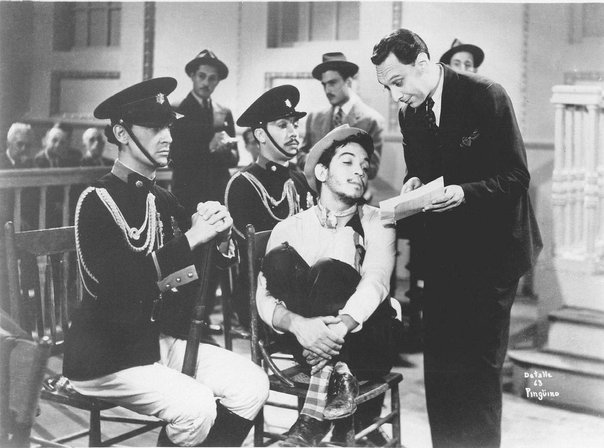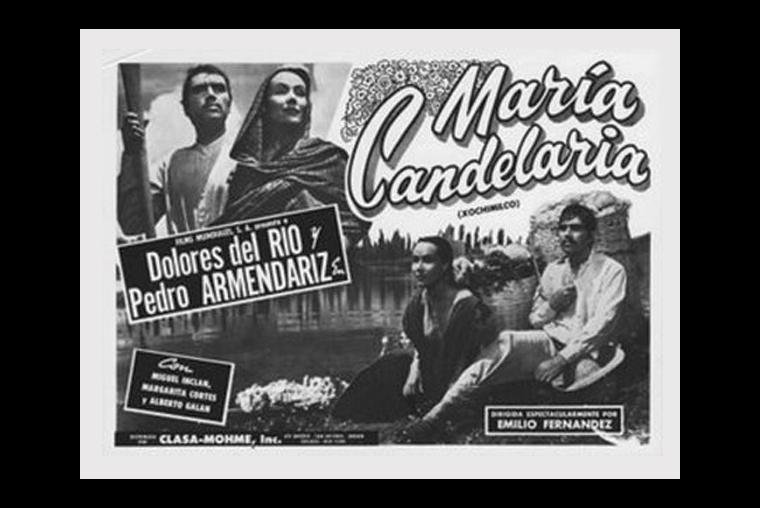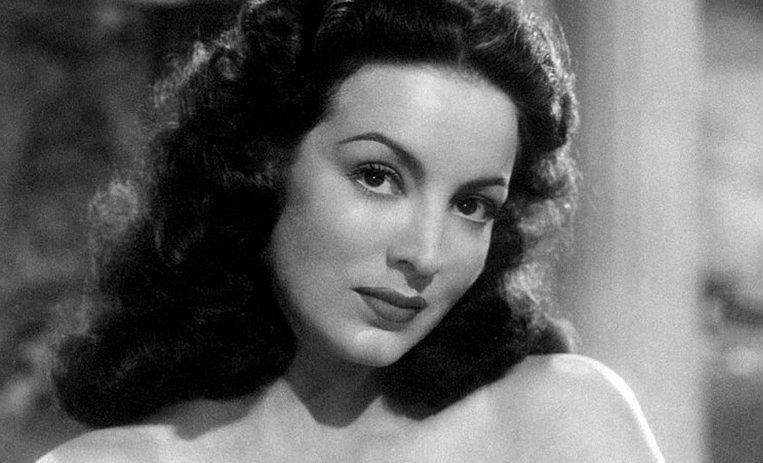Lately, we've seen Mexican directors, producers and actors taking over the cinema screen and red carpets all over the world. It seems to be the beginning of a new chapter in the Mexican film industry, and we couldn't be happier. But truth is, this isn't the first time for the country. In fact, decades ago, Mexico placed itself in the film industry map during a period known as the "Golden Age" of Mexican cinema.
"La Ã?Ã??Ã?Ã??poca de Oro del Cine Mexicano", as we say in Spanish, was a very important period between 1933 and 1964 in which the Mexican film industry reached and even overcame the United States' and Europe's levels of production, quality and economic success in films. Thanks to this, Mexico started being recognized on an international level and became the main producer of commercial films in Latin America.
Everything started during World War II, when the American and European film industries started to decline due to the lack of materials needed to make movies, which during that period were only about war and historic battles. This gave Mexico the opportunity to produce commercial films for the Mexican and Latin American markets. The cultural environment Mexico was surrounded by back in the day favored the emergence of a new generation of directors, producers, and actors that are, up until today, icons in Mexico and other Latin American countries.
The Mexican cinematic industry started exploring different themes in genres like romance, comedy, and musicals, thereby getting the attention of an audience that had been waiting for something new. Melodrama, though, was the dominant genre in which directors such as Emilio "El Indio" Fernández, Fernando de Fuentes, and Julio Bracho excelled in. Others like Luis Buñuel liked to mix in a little surrealism without leaving behind the true essence of the genre.

(Photo credit: diariocorreo.pe)
MarÃ?Ã??Ã?Ã?Ã?ÃÂa Félix, Pedro Infante, Sara GarcÃ?Ã??Ã?Ã?Ã?ÃÂa, Mario Moreno "Cantinflas", Dolores del RÃ?Ã??Ã?Ã?Ã?ÃÂo, Jorge Negrete, and Pedro Armendáriz are just a few of the many silver-screen legends that made their mark in Mexican cinema. Back then, actors and actresses were unlikely to be tied to one production company, so they had the chance to play different characters in several genres under the direction of very talented directors, making movies that were in every Mexican family's TV at night.
If you're ready to practice your Spanish, here are a few suggestions of movies you can watch.
"Allá en el Rancho Grande" (1932); directed by Fernando de Fuentes
"AhÃ?Ã??Ã?Ã?Ã?ÃÂ Está el Detalle" (1940); directed by Juan Bustillo Oro
"MarÃ?Ã??Ã?Ã?Ã?ÃÂa Candelaria" (1944); directed by Emilio Fernández
"Nosotros los Pobres" (1947); directed by Ismael RodrÃ?Ã??Ã?Ã?Ã?ÃÂguez
"Los Olvidados" (1950); directed by Luis Buñuel
"Tizoc" (1957); directed by Ismael RodrÃ?Ã??Ã?Ã?Ã?ÃÂguez

(Photo credit: neokunst.wordpress.com)
Even though this is a small list, we think it's a good introduction if you want to know more about the beginnings of Mexican cinema. In fact, some of these are known worldwide and received awards. MarÃ?Ã??Ã?Ã?Ã?ÃÂa Candelaria, for example, won the Palme d'Or at the 1946 Cannes Film Festival.
Nowadays, the Mexican film industry is experiencing huge growth and gaining back its international respect thanks to a new generation that has found a compelling way to tell stories and capture feelings. In the last years, we've witnessed Mexican actors and directors receiving plenty of recognition at the Oscars, the Cannes Film Festival and the Golden Globes. This generation is part of a new movement known as "Nuevo Cine Mexicano" (New Mexican Cinema), which started in the 90s with directors like Antonio Serrano and Alfonso Cuarón and is considered the rebirth of Mexican film.
Have you ever heard of the actors or movies we mentioned above? Which genre is your favorite? We're curious about your opinion on these films, what you understood and what you didn't, especially the new Spanish words or quotes you learned while watching them. Enjoying movies in Spanish is an excellent way to practice pronunciation and learn Spanish on your own with daily simple activities.

(Photo credit: de10.com.mx)
References:
https://theculturetrip.com/north-america/mexico/articles/the-golden-age-of-mexican-cinema-a-short-history/
http://chapala.com/elojo/index.php/staff/59-articles2011/aprilissue/77-mexcinema
How did it start?
"La Ã?Ã??Ã?Ã??poca de Oro del Cine Mexicano", as we say in Spanish, was a very important period between 1933 and 1964 in which the Mexican film industry reached and even overcame the United States' and Europe's levels of production, quality and economic success in films. Thanks to this, Mexico started being recognized on an international level and became the main producer of commercial films in Latin America.
Everything started during World War II, when the American and European film industries started to decline due to the lack of materials needed to make movies, which during that period were only about war and historic battles. This gave Mexico the opportunity to produce commercial films for the Mexican and Latin American markets. The cultural environment Mexico was surrounded by back in the day favored the emergence of a new generation of directors, producers, and actors that are, up until today, icons in Mexico and other Latin American countries.
The Mexican cinematic industry started exploring different themes in genres like romance, comedy, and musicals, thereby getting the attention of an audience that had been waiting for something new. Melodrama, though, was the dominant genre in which directors such as Emilio "El Indio" Fernández, Fernando de Fuentes, and Julio Bracho excelled in. Others like Luis Buñuel liked to mix in a little surrealism without leaving behind the true essence of the genre.

(Photo credit: diariocorreo.pe)
Films worth watching
MarÃ?Ã??Ã?Ã?Ã?ÃÂa Félix, Pedro Infante, Sara GarcÃ?Ã??Ã?Ã?Ã?ÃÂa, Mario Moreno "Cantinflas", Dolores del RÃ?Ã??Ã?Ã?Ã?ÃÂo, Jorge Negrete, and Pedro Armendáriz are just a few of the many silver-screen legends that made their mark in Mexican cinema. Back then, actors and actresses were unlikely to be tied to one production company, so they had the chance to play different characters in several genres under the direction of very talented directors, making movies that were in every Mexican family's TV at night.
If you're ready to practice your Spanish, here are a few suggestions of movies you can watch.
"Allá en el Rancho Grande" (1932); directed by Fernando de Fuentes
"AhÃ?Ã??Ã?Ã?Ã?ÃÂ Está el Detalle" (1940); directed by Juan Bustillo Oro
"MarÃ?Ã??Ã?Ã?Ã?ÃÂa Candelaria" (1944); directed by Emilio Fernández
"Nosotros los Pobres" (1947); directed by Ismael RodrÃ?Ã??Ã?Ã?Ã?ÃÂguez
"Los Olvidados" (1950); directed by Luis Buñuel
"Tizoc" (1957); directed by Ismael RodrÃ?Ã??Ã?Ã?Ã?ÃÂguez

(Photo credit: neokunst.wordpress.com)
Even though this is a small list, we think it's a good introduction if you want to know more about the beginnings of Mexican cinema. In fact, some of these are known worldwide and received awards. MarÃ?Ã??Ã?Ã?Ã?ÃÂa Candelaria, for example, won the Palme d'Or at the 1946 Cannes Film Festival.
Nowadays, the Mexican film industry is experiencing huge growth and gaining back its international respect thanks to a new generation that has found a compelling way to tell stories and capture feelings. In the last years, we've witnessed Mexican actors and directors receiving plenty of recognition at the Oscars, the Cannes Film Festival and the Golden Globes. This generation is part of a new movement known as "Nuevo Cine Mexicano" (New Mexican Cinema), which started in the 90s with directors like Antonio Serrano and Alfonso Cuarón and is considered the rebirth of Mexican film.
Have you ever heard of the actors or movies we mentioned above? Which genre is your favorite? We're curious about your opinion on these films, what you understood and what you didn't, especially the new Spanish words or quotes you learned while watching them. Enjoying movies in Spanish is an excellent way to practice pronunciation and learn Spanish on your own with daily simple activities.

(Photo credit: de10.com.mx)
References:
https://theculturetrip.com/north-america/mexico/articles/the-golden-age-of-mexican-cinema-a-short-history/
http://chapala.com/elojo/index.php/staff/59-articles2011/aprilissue/77-mexcinema












